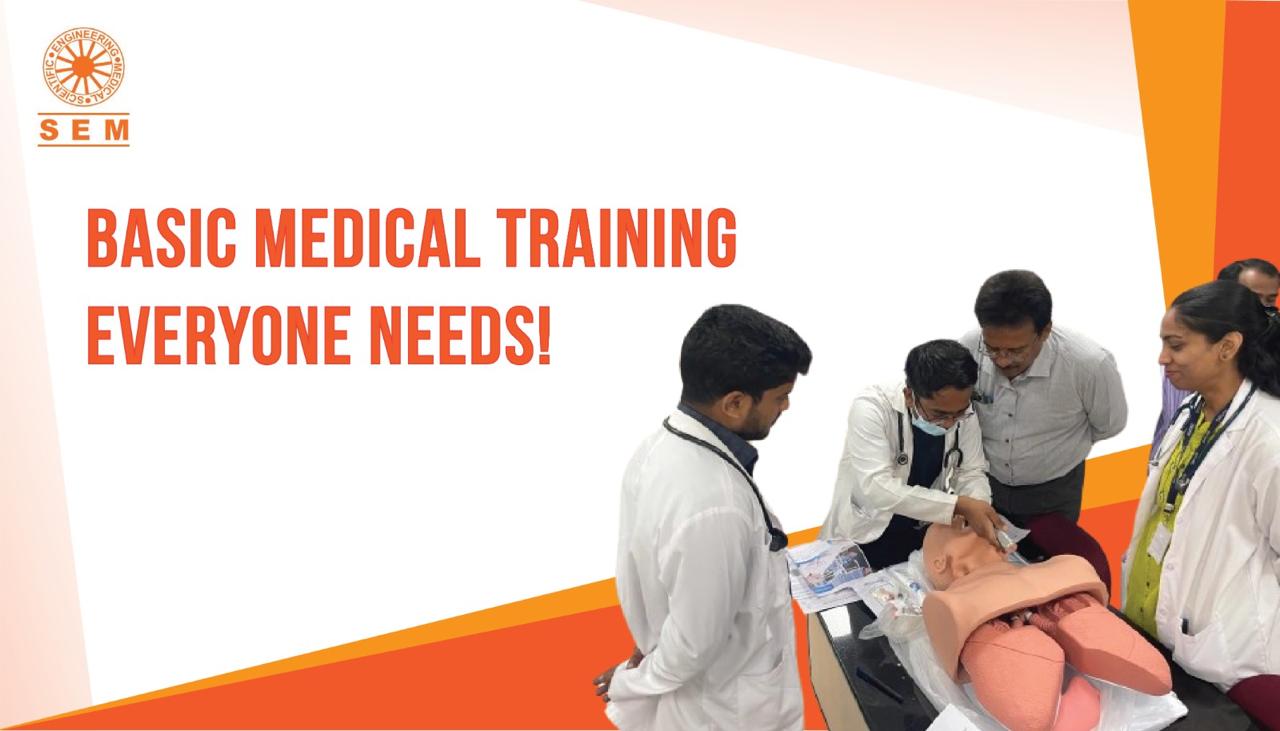Basic Medical Training Everyone Needs
Basic Medical Training Everyone Needs
From the time we are kids, we are being taught how to apply a band-aid, but as we grow up did we forget to know and learn about other important first-aids too?
Medical training is often viewed as the exclusive domain of healthcare professionals, but there is a growing recognition of the importance of basic medical knowledge for EVERYONE!
Understanding fundamental medical concepts and first aid techniques can make a significant difference in everyday life, from managing minor injuries to potentially saving lives in emergencies. Here, we explore the essential medical training that everyone should acquire to enhance their preparedness and response to health-related situations.
1. First Aid Basics
First aid is the cornerstone of basic medical training. Knowing how to provide immediate care in emergencies can stabilize a patient’s condition until professional help arrives. Essential first aid skills include:
- CPR (Cardiopulmonary Resuscitation): Learning CPR can be a lifesaver in situations where someone’s heart has stopped. It involves chest compressions and rescue breaths to maintain circulatory flow and oxygenation until emergency services arrive.
- Wound Care: Understanding how to clean and dress wounds, control bleeding, and recognize signs of infection is crucial. Proper wound care can prevent complications and speed up the healing process.
- Fracture Management: Basic knowledge of how to immobilize fractures and handle broken bones can prevent further injury and reduce pain until professional medical treatment is available.
2. Recognizing Medical Emergencies
Another critical aspect of basic medical training is the ability to recognize signs of common medical emergencies. This knowledge allows individuals to seek timely help and provide appropriate initial care. Key conditions to be aware of include:
- Heart Attacks: Symptoms such as chest pain, shortness of breath, and lightheadedness require immediate attention. Understanding these signs can prompt quick action and potentially save a life.
- Strokes: Recognizing the symptoms of a stroke—such as sudden numbness, confusion, difficulty speaking, or loss of balance—enables prompt medical intervention, which is vital for reducing long-term damage.
- Allergic Reactions: Severe allergic reactions, or anaphylaxis, can be life-threatening. Knowing how to identify symptoms like swelling, hives, and difficulty breathing, and how to use an EpiPen, can be crucial in managing these emergencies.
3. Basic Life Support (BLS)
Basic Life Support (BLS) training goes beyond first aid, equipping individuals with the skills to respond to a wider range of emergencies. This includes:
- Using Automated External Defibrillators (AEDs): AEDs are vital tools in resuscitating individuals experiencing cardiac arrest. BLS training covers how to operate these devices effectively.
- Airway Management: Techniques to ensure an open airway, such as the Heimlich maneuver for choking or positioning a person to prevent airway obstruction, are integral components of BLS.
4. Everyday Health Management
Basic medical training also encompasses everyday health management, empowering individuals to take charge of their well-being. This includes:
- Understanding Vital Signs: Knowing how to measure and interpret vital signs such as blood pressure, pulse rate, and temperature can help individuals monitor their health and detect potential issues early.
- Medication Awareness: Basic knowledge about common medications, their uses, and side effects ensures safe and effective self-care.
- Mental Health First Aid: Recognizing the signs of mental health crises and knowing how to offer initial support is increasingly important in today’s society. This includes understanding anxiety, depression, and stress management techniques.

